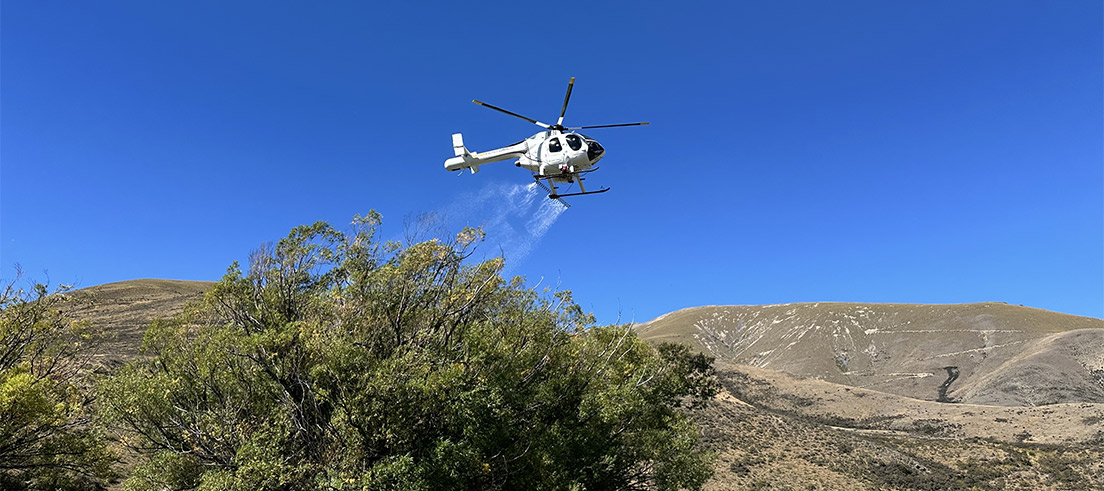
Second stage of willow control in Ahuriri catchment
This summer, we'll be doing a second controlled operation to spray willows in the Ahuriri catchment as part of efforts to improve the flow and health of waterways feeding into Lake Benmore.
In collaboration with landowners, we will focus on the invasive crack willow in smaller waterways in the Omarama area.
In autumn, we sprayed more than 270 hectares of willows, alders and poplars in the Ahuriri catchment in a single day. This included controlling trees around the Wairepo Ponds, small man-made lakes joined to Lake Ruataniwha, south of Twizel.
Willows can play a valuable role in flood protection, with deep root systems helping to stabilise riverbanks and slow floodwaters. However, in unsuitable locations, including parts of the Ahuriri catchment, they can rapidly overrun waterways, raise water levels, and block them, according to South Canterbury-based senior land management and biodiversity advisor Helen Risk.
Why are we spraying willows in the Ahuriri catchment?
In the Ahuriri catchment, unmanaged willow spread would:
- overrun waterways, leading to channel constriction, blockages, and increased flood risk
- extract substantial volumes of water, contributing to reduced flows and the drying of smaller tributaries
- outcompete native vegetation, with dense canopies that limit light penetration and suppress native plant regeneration
- disrupt the natural form and function of braided river systems, altering flow dynamics and habitat diversity.
Removing willows is one component of an integrated programme being undertaken collaboratively with Ahuriri’s landowners, catchment groups, rūnanga and the wider community to safeguard ecological values.
Learn more about protecting and enhancing the Ahuriri and Upper Waitaki catchment.
